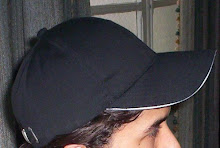By : Terry OBrien
The original model of cranial osteopathy belief is that intrinsic rhythmic movements of the human brain cause rhythmic fluctuations of cerebrospinal fluid and specific relational changes among dural membranes, cranial bones, and the sacrum. CST Practitioners believe they can palpably modify parameters of this mechanism to a patient’s health advantage.
William Garner Sutherland DO Dr. Sutherland (1873-1954) invented Cranial Osteopathy. Over the years, CST practitioners convinced themselves that gentle palpation of the cranium, guided through the understanding of Sutherland’s “Primary Respiratory Mechanism,” could improve an astounding range of conditions manifesting throughout the human body. Over the years, in both formal (e.g., classroom) and informal (e.g., clinical) settings, many more students and practitioners learned of Sutherland’s mechanism and abundant anecdotal success with patients.
Patients were healed, health careers were established, and all was good.
Then one has to ask the question?
(1) Does evidence and biological common sense entirely invalidate Sutherland’s mechanism?
From what I can research, diagnoses based on this mechanism feature not just low reliability but no reliability. There is no evidence, whatsoever, that different practitioners perceive similar phenomena or even that perceived phenomena are real.
No successful, properly controlled outcome analysis has been published. Practitioners have no scientific evidence that their therapeutic actions however grounded in biology or metaphysics have any direct effect on patient health.
Many papers and articles have been published challenging the claims made by the followers of Sutherland; significant research work has been published by Dr. James Norton and Dr S Hartman.
Hartman, SE. Norton, JM. Sci Rev Altern Med. 2. 8,2. 2004. A review of King HH and Lay EM, “Osteopathy in the Cranial Field,” in Foundations for Osteopathic Medicine; pp. 24– University of New England.
Hartman SE, Norton JM. Craniosacral therapy is not medicine. Physical Therapy. 2002;82:1146–1147. University of New England.
Many CST practitioners deflect criticism by focusing, instead, on their perceived yet scientifically almost meaningless personal clinical success. Even though there is no evidence of the efficacy of Craniosacral Therapy, Cranial osteopathy, as a belief system, powers onward.
Yet scientific inquiry has become integral to almost everything physicians do. Without science, medicine would still involve little more than applying bandages, setting bones, and administering placebos. Perhaps Cranial osteopathy/Craniosacral therapy is not a medicine for our time. Perhaps properly controlled outcome studies will show that, though biologically anomalous, these techniques nonetheless produce a direct and positive effect on patient health.
All I can say is that in my study and observations, I have concluded that cranial osteopathy is a pseudoscientific belief system, maintained by both patients and practitioners through operation of well and widely understood principles of human personal and social psychology. From that standpoint, practitioners simply have defended passionately held views to which they have long been both indoctrinated and committed.
Terry O’Brien
Back Doctor UK
Thursday, March 19, 2009
Subscribe to:
Post Comments (Atom)


No comments:
Post a Comment